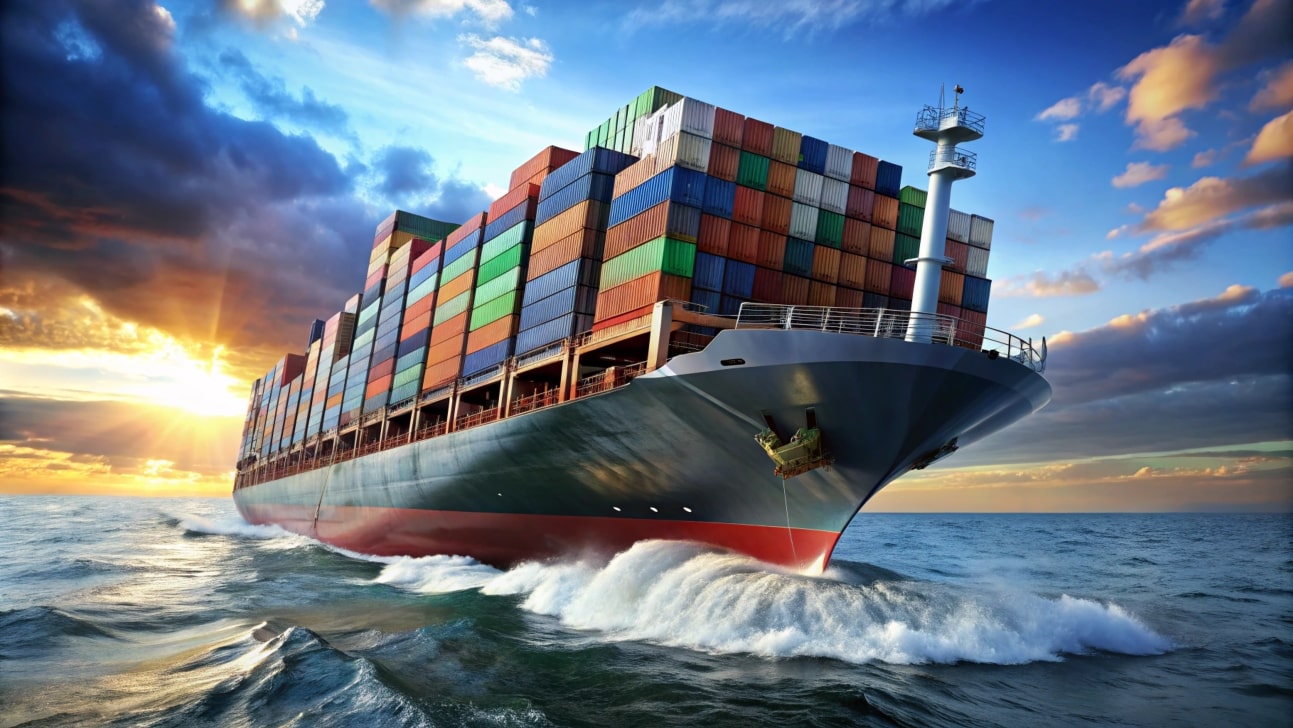Imagine being aboard a container ship maneuvering through the open sea when suddenly, the vessel starts rolling in a peculiar manner. You might wonder what is causing this unexpected motion and how it could impact the ship’s stability. Parametric rolling in container ships is a complex phenomenon that warrants attention and understanding. The interaction between various factors can lead to potentially dangerous situations, prompting the need for careful consideration and proactive measures to guarantee safe operations.
Definition of Parametric Rolling
Parametric rolling, in the context of container ships, refers to the phenomenon where the vessel experiences a significant rolling motion due to the combined effects of wave frequency and ship speed. This type of rolling is a result of the ship’s dynamic stability being affected by the wave patterns it encounters.
When the natural rolling period of the ship coincides with the wave encounter frequency, parametric rolling occurs, leading to increased amplitude and potentially dangerous angles of roll.
Dynamic stability plays a vital role in determining a ship’s susceptibility to parametric rolling. By understanding the wave patterns and their frequencies, ship designers can implement measures to mitigate the effects of this phenomenon.
Factors such as the vessel’s weight distribution, hull design, and speed are all essential in ensuring the ship’s dynamic stability and reducing the risks associated with parametric rolling. Additionally, proper ballasting and cargo stowage are fundamental to maintaining the ship’s stability under varying sea conditions.
Causes of Parametric Rolling
One of the primary factors contributing to the occurrence of significant rolling motion in container ships is the interaction between the vessel’s natural rolling period and the frequency of encountered waves. When the wave patterns align with the ship’s natural rolling period, it can lead to parametric rolling.
This phenomenon is influenced by various factors, including ship design, stability criteria, cargo shift, weather conditions, and hull form.
Ship design plays a vital role in determining the susceptibility to parametric rolling. Vessels with certain hull forms may be more prone to this type of motion due to their hydrodynamic characteristics.
Additionally, stability criteria, such as metacentric height and righting moments, impact a ship’s ability to resist parametric rolling.
Cargo shift within the containers can also affect the ship’s dynamic stability, potentially exacerbating parametric rolling.
Weather conditions, especially encounters with long-period waves, can further amplify this phenomenon.
Understanding these causes is essential for mitigating the risks associated with parametric rolling in container ships.
Effects on Container Ships
When encountering parametric rolling, container ships experience a range of effects that can impact their stability, cargo, and overall operational efficiency.
Safety concerns arise due to the increased risk of capsizing during this phenomenon. Operational challenges are heightened as parametric rolling can lead to structural fatigue and machinery damage.
Weather impacts exacerbate the situation, with adverse conditions amplifying the occurrence of parametric rolling. Design considerations play an essential role in mitigating the effects, as well-designed vessels are better equipped to handle such conditions.
Crew training becomes vital to guarantee that seafarers are prepared to manage parametric rolling effectively.
Cargo stability is compromised, leading to potential damage and loss if not properly secured.
Understanding the implications of parametric rolling on container ships is essential for the maritime industry to enhance safety protocols and operational efficiency.
Addressing these effects requires a holistic approach that considers vessel design, crew competency, and cargo handling procedures.
Mitigation Strategies
To effectively address the challenges posed by parametric rolling in container ships, implementing robust mitigation strategies is essential.
Here are key strategies to contemplate:
- Stability Assessment: Conduct regular stability assessments to guarantee the vessel’s stability criteria are met, especially under parametric rolling conditions.
- Design Modifications: Think about making design modifications such as anti-roll tanks or fins to improve the ship’s resistance to parametric rolling.
- Operational Guidelines: Develop and follow specific operational guidelines to minimize the effects of parametric rolling, including speed adjustments and route planning.
- Crew Training: Provide thorough training to the crew on how to handle parametric rolling situations effectively, including proper ballasting techniques and emergency procedures.
Case Studies and Examples
In considering the real-world implications of parametric rolling in container ships, exploring case studies and examples provides valuable insights into how different vessels have encountered and managed this dynamic phenomenon.
Real-world incidents such as the MV Cougar Ace and MV MSC Napoli have highlighted the dangers of parametric rolling. Technical analyses of these incidents revealed the complex interplay of wave conditions, ship design, and cargo distribution that can lead to parametric rolling.
Safety protocols developed in response to these incidents emphasize the importance of monitoring weather conditions, maintaining stability margins, and securing cargo properly.
Engineering challenges associated with parametric rolling include designing ships with increased stability in adverse conditions and developing advanced simulation tools to predict and mitigate the effects of this phenomenon.
Regulatory responses, such as the International Maritime Organization’s guidelines on intact stability criteria, aim to enhance the safety of container ships by setting standards for stability assessments.
Studying historical examples and applying lessons learned is essential in improving the understanding and management of parametric rolling in the maritime industry.
Future Implications and Research
Future implications and research in the domain of parametric rolling in container ships are vital for advancing safety measures and enhancing operational efficiency.
As this field evolves, it’s important to take into account the following:
- Technological Advancements: Researching and implementing cutting-edge technologies can help in developing predictive systems to mitigate the impact of parametric rolling on container ships.
- Regulatory Frameworks: Establishing thorough regulations and guidelines based on research findings can guarantee standardized practices across the industry, ultimately enhancing safety and operational protocols.
- Data Analysis: Conducting in-depth data analysis on parametric rolling incidents can provide valuable insights for developing preventive measures and improving ship design.
- Simulation Studies: Investing in advanced simulation studies can aid in understanding the complex dynamics of parametric rolling, leading to the development of effective countermeasures and training programs.
Frequently Asked Questions
How Does Parametric Rolling Differ From Broaching in Container Ships?
Parametric rolling in container ships, distinct from broaching, occurs due to dynamic stability issues linked to wave interaction. Recognize its potential dangers, as it involves synchronous rolling and can lead to severe stability problems.
Can Parametric Rolling Lead to Cargo Damage or Loss?
When you consider cargo safety, parametric rolling poses a risk for potential cargo damage or loss. To mitigate this, container ships implement stability measures like anti-rolling tanks or ballast adjustments to counteract the effects of parametric rolling.
Are There Specific Weather Conditions That Trigger Parametric Rolling?
In container ships, specific wave patterns and rolling frequency can trigger parametric rolling. These conditions amplify the ship’s natural rolling motion, potentially leading to cargo damage or loss. Understanding and mitigating these factors is essential for safe navigation.
What Role Does Ship Design Play in Preventing Parametric Rolling?
Ship design directly impacts parametric rolling prevention. Hull shape, stability factors, weight distribution, and design innovations are essential. Optimizing these elements enhances a vessel’s resistance to this dangerous phenomenon, safeguarding both cargo and crew during voyages.
How Do Crew Training and Experience Affect Handling Parametric Rolling?
Enhance crew training through simulation scenarios. Encourage experience sharing to improve handling of parametric rolling. Both elements are essential in preparing crews for challenging situations at sea, mitigating risks associated with this complex ship motion phenomenon.






